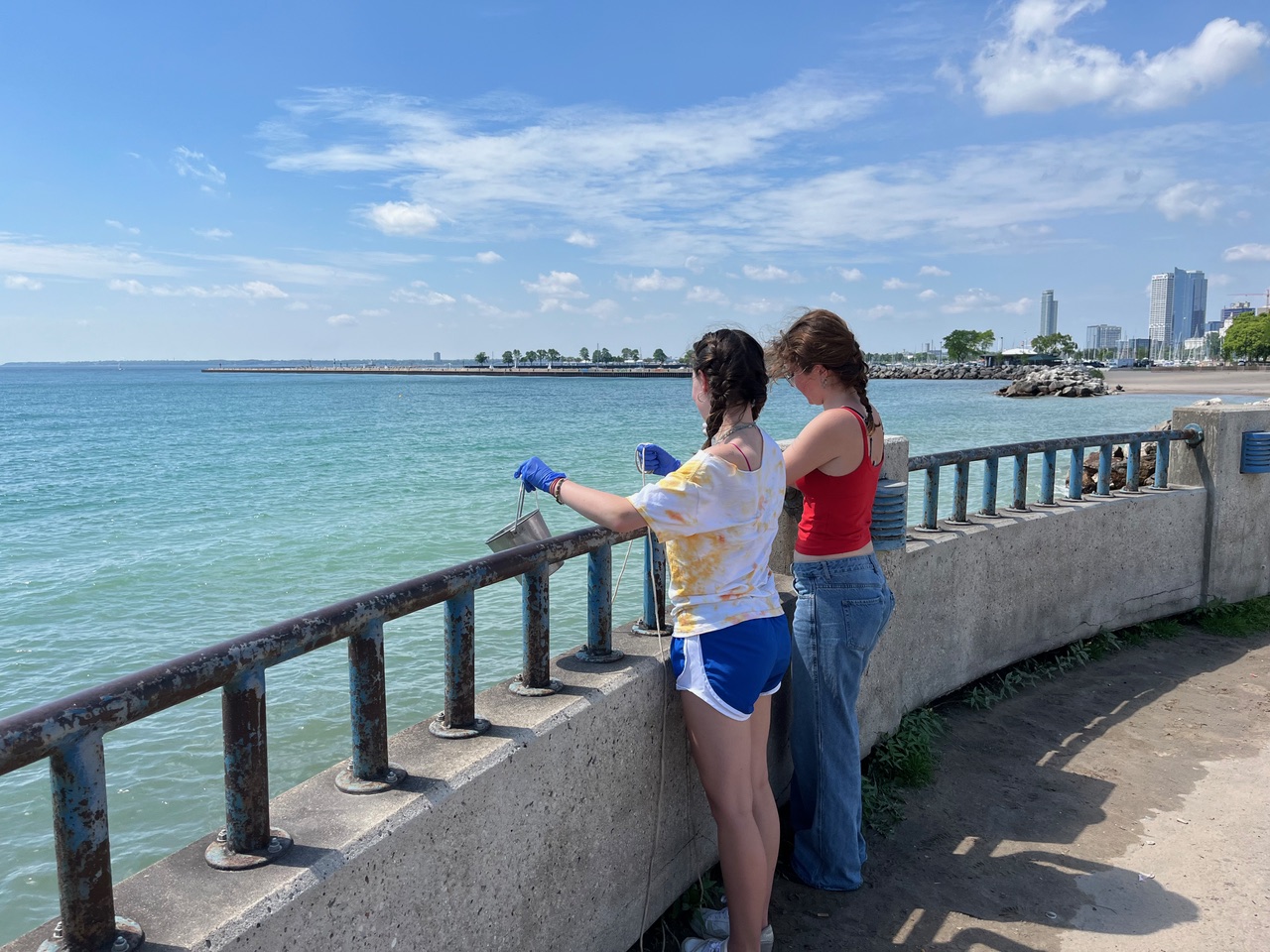Scientists have long known that phosphorus fuels growth of algae in lakes and streams. Wisconsin Sea Grant researchers have found that nitrogen levels are a factor in whether or not these algae – specifically, blue-green algae –produce toxins. The findings, published in PLOS ONE have parts of the scientific community buzzing.
“Under certain circumstances, it’s the nitrogen levels that fuel the production of toxins in blue-green algae,” said Katherine McMahon, a professor with the Department of Civil and Environmental Engineering at the University of Wisconsin-Madison. “Phosphorus is important, but you need to have that critical component of nitrogen stress to trigger toxin production.”
The study, conducted on Lake Mendota in 2010-2011, involved multiple measurements each week during the summer for the presence of blue-green algae along with nitrogen and phosphorus levels. The first year of testing, researchers noticed a distinct change in the blue-green algae population. “There was a massive bloom of nontoxic blue-green algae in the lake in late June,” said Lucas Beversdorf, who was McMahon’s Ph.D. student at the time. “The algae used up all the nitrogen in the water, and then the bloom disappeared. After that, we started to see the production of toxic blue-green algae.”
Curious, Beversdorf looked at records from Lake Mendota back to the late 1800s and noted that the shift in these blooms happened every year at the same time. This could help researchers and public health officials predict the likelihood of harmful algal blooms occurring in the lake.
Why does a lack of nitrogen cause the algae to produce toxins? “We suspect it’s some sort of survival mechanism,” said Beversdorf. “The cells are just trying to maintain their homeostasis until there’s enough nitrogen for them to get back to their normal growth patterns.”
“The algae aren’t making the toxin to hurt anybody,” said McMahon. “One theory is that they’re making it to store nitrogen and by accident, it happens to be toxic to humans, dogs and cows, etc.”
Beversdorf presented the findings at a Gordon Research Conference last June in Boston. These international conferences encourage discussion of frontier research in biological, chemical, and physical sciences and related technologies. His presentation won the conference’s “hot topic” award because it offered new insights and was controversial, Beversdorf explained.
What can people do to prevent algal blooms? McMahon is doing her part as part of the Dane County Lakes and Watershed Commission, which is developing ordinances to protect water quality by managing phosphorus, especially inputs from farms. At an individual level, McMahon recommends that people “support their elected officials that support water quality. Get a rain barrel; make sure your leaves don’t go down the storm drain; buy local products that are produced in a sustainable manner.”





